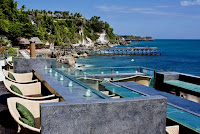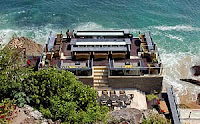
I think the British are great...read on and you'll know why I say this.
Adam Westbrook is a freelance multimedia journalist, blogger & lecturer with several years experience in television, radio and online. His blog is one the best multimedia-biased on the internet, and if you haven't bookmarked yet, you should.
He recently published a free e-book titled
6×6, wich is a series of six blog posts giving advice to the budding multimedia journalists. This is a must-read e-book for anyone who's interested in getting started into journalistic multimedia, and one that I shall use in my own teachings of the subject.
In his Best of the Blogs 2009, Adam kindly lists The Travel Photographer in the Photojournalism category saying
"Tewfic El- Sawy niftily picks up the best photojournalism from around the world and showcases it. A forward thinking blog, the Travel Photographer also presents new multimedia from photogs." It shares this recognition with Livebooks' RESOLVE and The New York Times' LENS...an august company indeed.
Also from Great Britain is
Ian Furniss, a photographer whose website showcases his remarkably luminous landscape work of the United Kingdom and Eastern Europe. Despite having faced sad personal circumstances in 2009, he wrote an uplifting blog post titled
The Inspirational World, which lists a number of his favorite photographers. I am one of those, and I'm indebted to him for writing such a generous opinion about my work.
"I should emphasise that there is no particular order to this list but the next photographer i’d like to introduce you to, if you haven’t been already, is Tewfic El-Sawy, otherwise known as The Travel Photographer. I came across his work through his blog which in turn I came to through Gavin’s site. His blog was a revelation for me at the time because I was so wrapped up in learning about photography, that I had no idea it could be anything other than serious work. Tewfic El-Sawy manages to put humanity back into photography in a way that i’ve yet to come across anywhere else. His photography is nothing short of stunning and each image is captured with the same honesty & humanity you feel reading the words of his blogs. I’m sure there are many who could tell you all about the technical skill, but for me what is important is the feel of an image and these are images you feel right through to your bones."
As I said...the Brits are great.
 Saat ini Bar yang paling di cari adalah the Rock Bar Ayana Resort Hotel, sampai sampai para tourist rela antre , untuk dapat menikmati nikmatnya cocktail The Rock Bar sambil menyaksikan indahnya sunset di laut lepas samudra Hindia. Betapa tidak , suasana yang lain dari pada yang lain jika anda datang di tmpt ini . Jika Anda ke Bali jgn deh sampe gak kesini.
Saat ini Bar yang paling di cari adalah the Rock Bar Ayana Resort Hotel, sampai sampai para tourist rela antre , untuk dapat menikmati nikmatnya cocktail The Rock Bar sambil menyaksikan indahnya sunset di laut lepas samudra Hindia. Betapa tidak , suasana yang lain dari pada yang lain jika anda datang di tmpt ini . Jika Anda ke Bali jgn deh sampe gak kesini.
















































